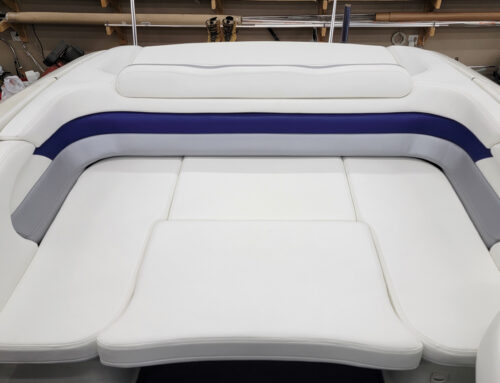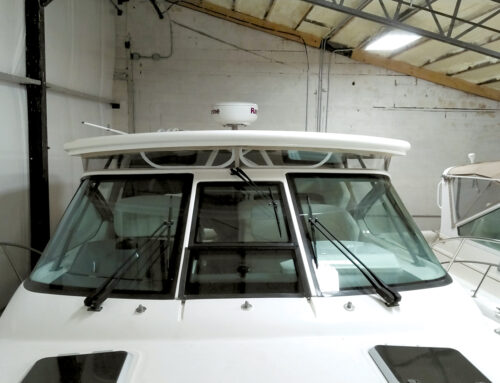Wallcoverings for vessel interiors
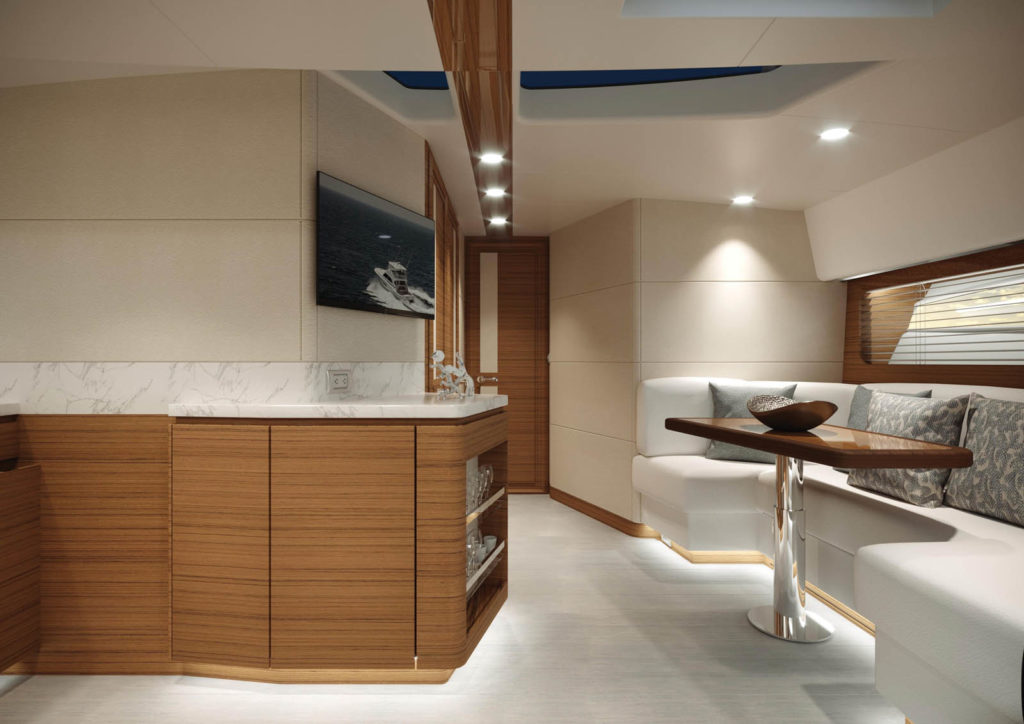
By Terri Madden and Alayna Wool
Wall panels and headliners make a statement when entering the saloon of a yacht. Much like the color or texture of the walls of your home, wall panels and headliners are items that cannot be overlooked—especially when they start to sag and age. Fresh wall panels truly enhance the overall appearance of any interior, quickly giving a vessel’s cabin an updated look.
Wall panels offer a visual focal point as well as acoustic tranquility to cabin interiors. The latest vertical and horizontal offerings from a variety of manufacturers are often showcased at international boat shows throughout the year.
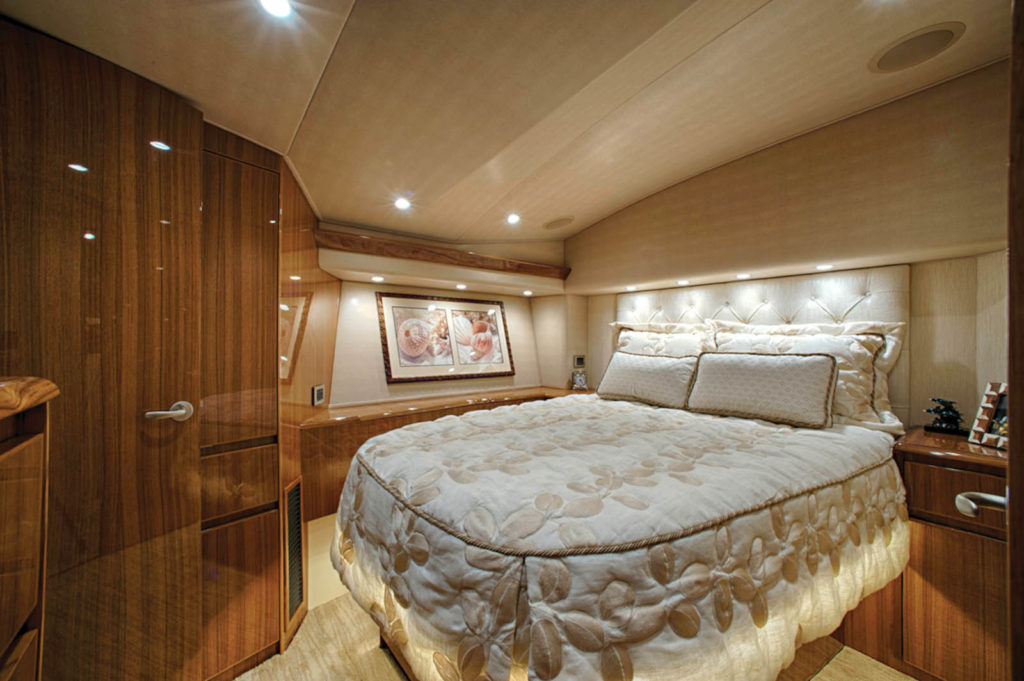
Material considerations
A pliable vinyl upholstery fabric with the look and feel of real leather is always a good choice for a headliner or wall panel. An important consideration is whether the final product will include a foam backing. Foam-backed vinyls are easy to clean but will have seams that require covering. We generally use foam-backed materials as headliners or other applications where the material is wrapped around the panel edges and the panels align next to one another.
Be sure to review manufacturer specifications for strength, abrasion resistance, cleaning and maintenance. Quality materials feature topcoat finishes that protect against bacteria and fungus, which is extremely important for marine applications. Manufacturers also offer materials in a multitude of colors and textures to complement boat interiors for a unified look throughout the cabins.
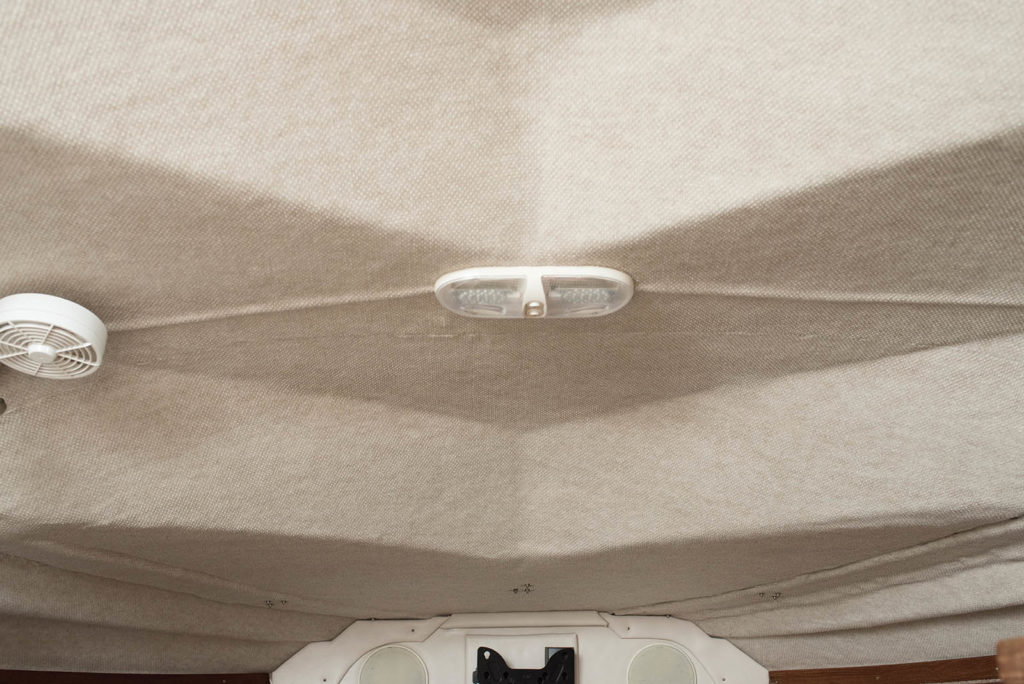
Headliner materials
Headliner fabrics come in a variety of options, including comfortable carpet-type fabrics and the foam-backed vinyls mentioned above.
A “HullBlanket” headliner fabric is a durable, stain-resistant carpet-type material that offers antistatic and moisture-proof properties. This economical material hides irregular hull imperfections and works especially well for vessels under 30 feet.
Vinyl headliners feature a marine vinyl front with or without a foam backing. Most foam-backed vinyls consist of a 3/16-inch foam adhered to the vinyl face. The foam adds a bit of cushion and helps conceal small imperfections in the hull. It can also be cut away to accommodate protrusions like nuts and bolt heads. Manufacturers now offer foam-backed headliner and perforated headliners in many textures and styles. These vinyl headliners create a smooth appearance and are easily wiped clean. Keep in mind that the edges of foam-backed vinyl should be covered, as they will leave a visible foam edge. Because of this, foam-backed vinyl is a great choice for applications where the seams will be hidden under trim pieces or where the material is wrapped around panel edges.
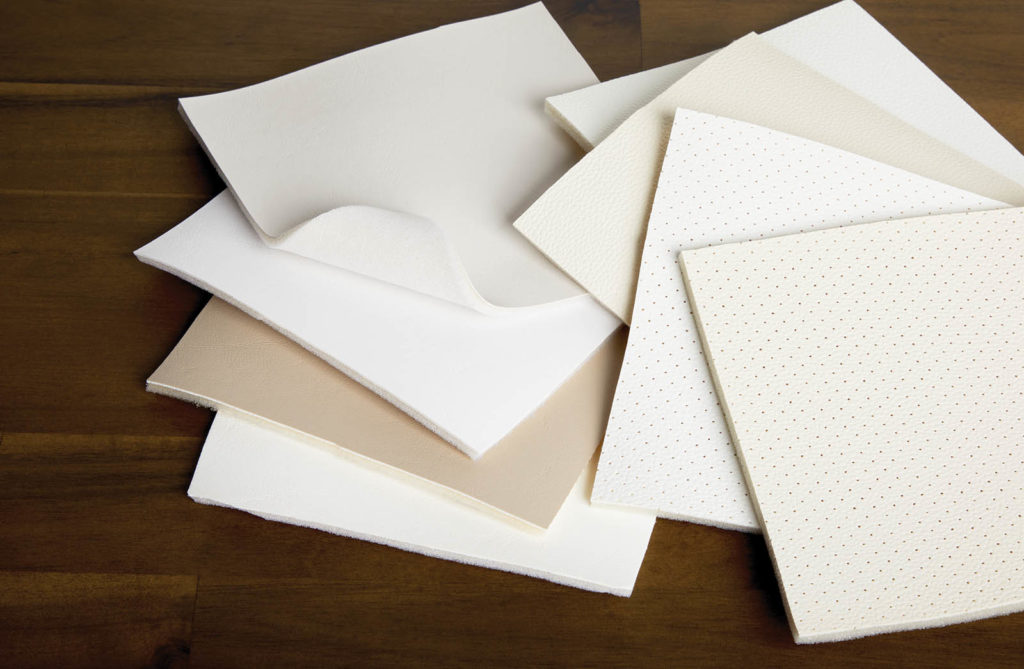
Installation tools and techniques
Do not underestimate the time and effort needed to prep areas for new surface materials. Be sure to remove all original plywood or any other material prior to installing new materials.
Beyond a general spray adhesive, such as 3M™ General Trim Adhesive, only a few other materials are needed for installing a headliner or wall panels. Marine vinyl without a foam backing can also be used as a hull liner. Apply the spray adhesive to securely adhere the material to the hull, being careful to avoid bubbling or gaps. This is a one-shot process, so you need to get it right the first time. Like foam-backed vinyl, these products are easy to clean but will also have seams that may require covering. We recommend planning the material layout ahead of time on paper to avoid or limit any seams.
Tools that are lightweight and ergonomically designed with textured, nonslip surfaces make installation easier. Consider tools that include a 45-degree angle to allow for access to tight spaces at close angles. Straightedge tools work well on straight edges for short distances, and a 9-inch “pizza cutter” works well for long runs along either the perimeter or a mid-wall track.
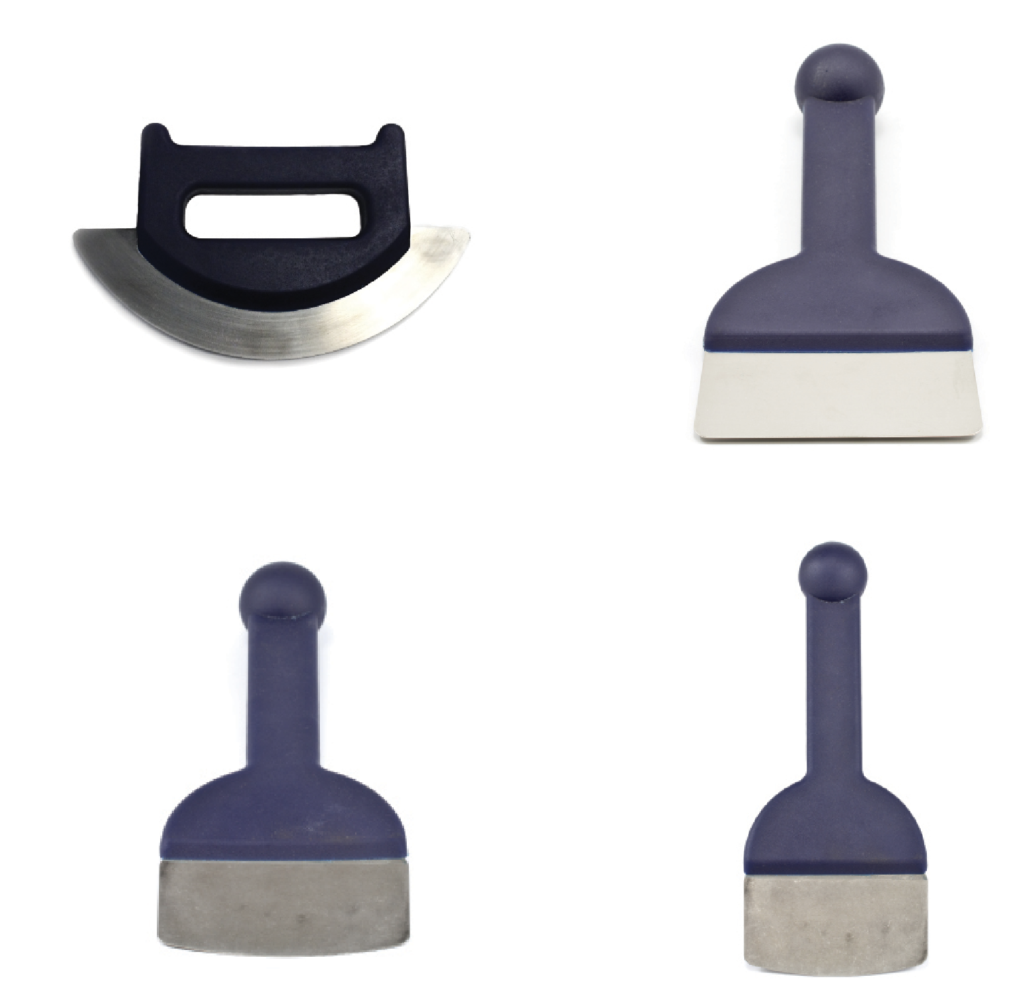
Resources for success
Replacing an existing headliner is relatively simple with proper preparation. In-depth videos, tips and resources for several types of headliner replacements are available online from Sailrite® at www.sailrite.com.
Various online marine forums are also wonderful resources, which offer in-depth discussions elaborating problems and solutions. These forums include: www.GreatGrady.com, www.whalercentral.com/forum, and www.yachtforums.com.
Terri Madden (LegendTerri) and Alayna Wool (Ms. Alaynious) are a mother/daughter team who co-own Sand Sea & Air Interiors Inc. in sunny San Juan, Puerto Rico. www.sandseaair.com
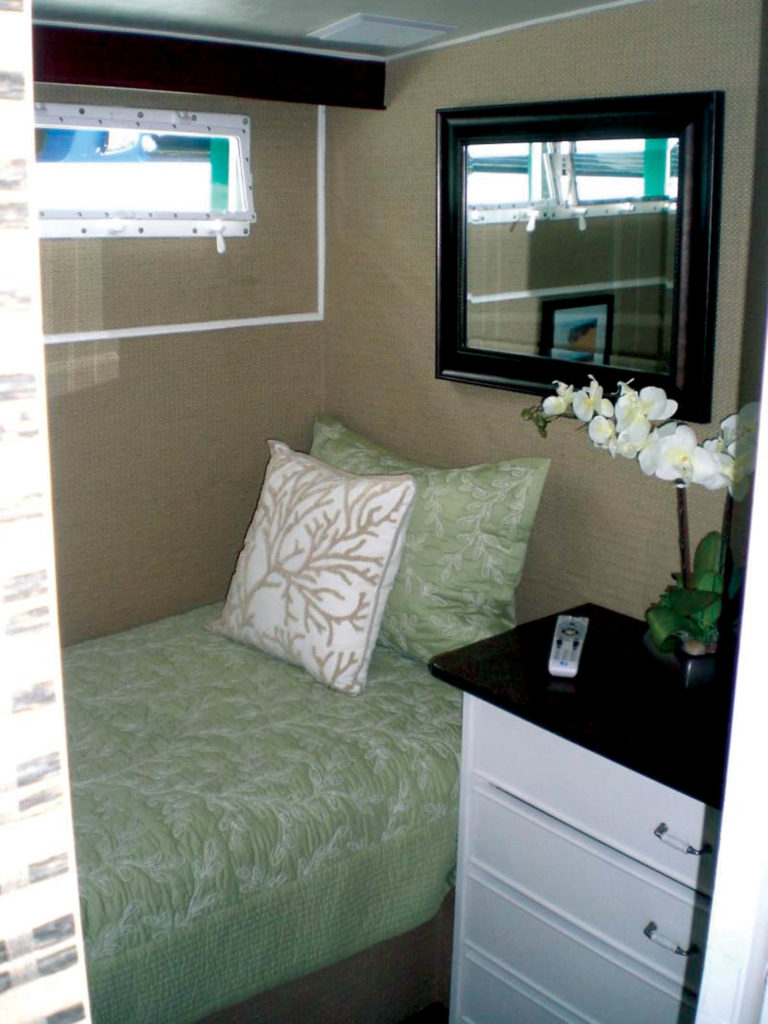
SIDEBAR: Walls on the water
By Sigrid Tornquist
While textile wallcoverings are gaining momentum in the residential and commercial markets, wallcoverings for marine applications remain vinyl-based. Mildew-resistance, water resistance and cleanability are, of course, paramount. “What changes with wallcoverings for marine applications are the patterns,” says Dave Estiri, co-owner of Sea Furniture, Santa Ana, Calif. (www.seafurniture.com). “We’re seeing more bright colors and geometrics right now.”
Marine wallcovering substrates are typically wood, drywall and fiberglass. For a refit or redesign, the old wallpaper should be removed; walls should be scraped and sanded; and then washed and disinfected in preparation for the wallpaper, Estiri says.
Which primer to use depends on the substrate, according to Spencer Colgan, Tampa Bay Wallpaper Installer, Tampa, Fla. (www.tampabaywallpaperinstaller.com). “Fiberglass would need a different primer that would be more aggressive,” he says.
Vinyl with foam backing used over wall panels is an option, with a typical thickness ranging from 1/16 inch to 3/4 inch. “This is something you see more in older designs rather than in brand-new ones,” Estiri says. “The thing to note with this application is that after the surface is cleaned and conditioned, the foam with the vinyl needs to be backed with mesh so that everything stays together.”
As with any installation, the foundation of success is using well-made materials and stellar techniques. “You need to know what you’re doing and do it right,” Estiri says. “Make sure everything looks as good in five to 10 years as it does the first day.”
 TEXTILES.ORG
TEXTILES.ORG 



